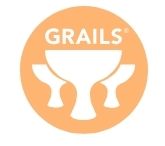| Apache Grails 7.0 Released |
| Written by Nikos Vaggalis | |||
| Thursday, 06 November 2025 | |||
|
A new major version of Grails has been announced, together with news of its graduation to an Apache top-level project.
Despite its already long life, which began in 2005, the venerable JVM project just got out of incubation, graduating to a Top-Level Project at the Apache Software Foundation. What is the importance of that? The Apache Incubator is the primary entry path for projects and codebases wishing to become part of the efforts at The Apache Software Foundation. For a project to graduate from incubator into TPL shows great maturity and community involvement. It provides confidence in the longevity of a project and is great news for those wishing to adopt it. And that happened with version 7.0. Grails, of course, is a powerful, Apache Groovy-based web application framework for the Java Virtual Machine (JVM), built on top of Spring Boot. Throughout the years though it has evolved into something more than that; to a complete framework comprised of Spring, Micronaut, Hibernate, Tomcat and more. Instead o Java, Grails uses the Groovy programming language and is intended to be a rapid application tool by hiding configuration details from the developer. Grails 7.0 is a major release that includes new features, improvements, and dependency upgrades. Dependency upgrades include Java 17+, Groovy 4, Spring Boot 3.5, Jakarta EE 10 and Spring Framework 6.2. Features include containerized browser testing with Testcontainers enabling cross-platform functional and integration tests, optional Micronaut integration, SBOM generation, reproducible builds and artifacts. It also upgrades numerous plugins with their newest versions like Grails Spring Security 7.0.0, Quartz 4.0.0, and Redis 5.0.0. Finally, all published binaries now include a Software Bill of Materials. SBOMs in standardized formats can be used as input in a variety of tools, like vulnerability scanners in order to discover vulnerabilities in components that could pose a threat. The advantage is that consumers are able to know not just what’s in their software but also if there's any risks that need to be remediated. Plus the usual bug fixes for persistence, documentation, and build processes. Full changelog on the project's Github page, link below. More InformationRelated Articles
To be informed about new articles on I Programmer, sign up for our weekly newsletter, subscribe to the RSS feed and follow us on Twitter, Facebook or Linkedin.
Comments
or email your comment to: comments@i-programmer.info |


